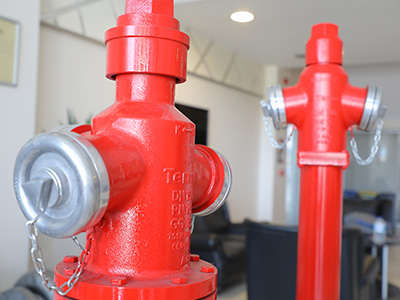What Is a Fire Hydrant? How Does It Work?
Fire hydrants are first response equipment to extinguish fires where they are used. This also facilitates the work of fire trucks that will come to the fire scene later. It is also the equipment that fills the empty warehouses of fire trucks in the fire area in the most effective way.
Fire hydrants are generally divided into two groups;
- Above Ground Fire Hydrants
- Underground Fire Hydrants
Places of use
Fire hydrants are used in many areas such as factories, warehouses, industrial plants, OSBs, buildings, living areas, forests. Fire hydrants have rules to be considered such as where and how they will be located.
Hydrants are fed from mains water in city centres. In areas such as factories, industrial plants and forests, water supply is made through fire pumps.
In city centres 150 metres apart, factories, forests, industrial facilities, etc. In areas such as factories, forests, industrial facilities, etc. installation is made 40-50 metres apart. These distances may vary according to the application areas. In addition, if appropriate, hydrants are started to be installed from 10-12 metres away from the building.
Must be visible and easy to find
Fire hydrants should be visible and easy to find. Fire hydrants should contain water for fire intervention in all climatic conditions. The biggest danger in climatic conditions is freezing. This danger is prevented by placing the opening and closing valve at the bottom and under the ground.
The part of the hydrant above the ground should be minimum 630 mm. After the hydrants are installed, the pipes to which they are connected should be thoroughly cleaned.
There are also norms to be considered in the production of fire hydrants. Gedik Termo Valve makes fire hydrants according to TSE 14384 and CE 0408. Gedik termo valve fire hydrants are manufactured using quality raw materials to adapt to even the most challenging climatic conditions.
GEDİK TERMO VALVE FIRE HYDRANTS
Gedik Termo Valve Production Engineer Murat Aydemir explains the features of Termo Valve branded fire hydrants as follows:
"With the check valve design we have developed for use in cold climatic conditions, we prevent the hydrant from freezing by emptying the hydrant even in the most difficult climatic conditions. This design protects us from frost-related product failure or cracks on the body.
We produce Above Ground Fire Hydrants with 3 different diameters as DN80, DN100 and DN150 and PN16 pressure class with cast iron and ductile iron body materials.
We produce Underground Fire Hydrants as DN80 PN16 and Cast iron body. Our ability to produce Above Ground Fire Hydrants in different lengths without changing the diameter according to the place of use puts us ahead of our competitors."
